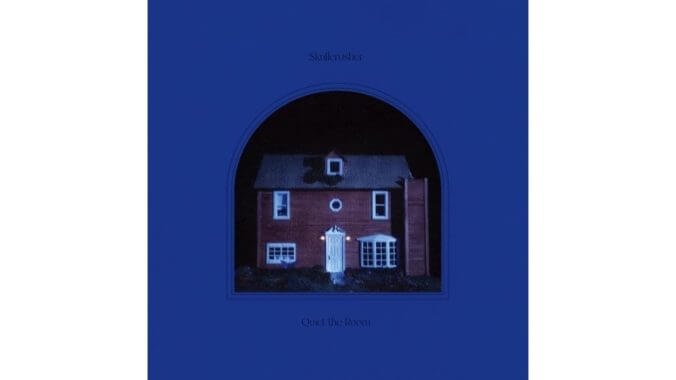Skullcrusher Finds Her Darkness on Quiet the Room
The debut full-length from Helen Ballentine pulls her sound closer to the kind of malevolence her band’s name would imply

Since Skullcrusher first burst onto the scene one spring day in 2020, the irony inherent in the project name was apparent, and immediately moved on from. Helen Ballentine, the Los Angeles singer/songwriter behind the name, makes music with an underlying softness that belies the moniker’s assumed harshness. First impressions also set Skullcrusher up for a slew of comparisons to 2020’s other macabre blond, Phoebe Bridgers. While the temptation of that comparison is strong, the music that Ballentine would eventually release undercut it swiftly. Though the two’s music shares a stillness, Skullcrusher is notable much more for creating stirring, malevolent soundscapes, treating her vocals like a whispering string instrument, rather than a wry, witty point of focus. The pair of EPs Ballentine put out in the intervening two years set her up as a figure on the rise, but without the smothering hype that often plagues women who make music deemed “sad” by algorithms and streaming editorial playlists. Held together with instrumental passages, and discordant interludes, Quiet the Room is the first full-length work that Ballentine has unveiled to date. After only releasing smaller projects, it’s refreshing to see her take up as much space as she needs to. Just as refreshing, her music has also grown more unsettling. Her debut album, Quiet the Room finds Ballentine edging her sound towards the sort of dark, ambient gloom that her project’s name may have hinted at.
It’s remarkable how much the musicians involved, who include Ballentine and Odetta Hartman, Camellia Hartman and Runnner’s Noah Weinman, can do with such a small pool of instruments. Most of the songs involve only a combination of acoustic guitar, piano and violin, but the arrangements here are intricately detailed; this is an album one can fall into, and never run out of things to interrogate. This is even true for the stoic and sparse “Lullaby in February.” An acoustic track that recalls Grouper’s work on Ruins, “Lullaby” is the most direct and intimate moment of Quiet the Room. However, the sparsity is short-lived. As Ballentine chants what reads more like an incantation than song lyrics, a curse befalls the peaceful instrumental. A creeping rumble of bass grows, eventually subsuming every inch of sonic space. Once at its loudest, it sticks around just long enough to instill a sense of dread in you. Right when you lose balance, it recedes as smoothly as it snuck in.
A common challenge to Skullcrusher’s music is that because it is so vast, Ballentine herself can hide within it. Her voice is an undeniably powerful instrument, but often its strength overpowers the words she sings, however intricate they may be. Ballentine, on a song like “Sticker,” for instance, sounds melded to the guitar, bathed together in a wash of reverb. A line about memory’s weak grasp—“Take a picture of my room / Hold the colors, green and blue / Looking back, do I recognize it?”—barely registers to a listener who is not intently trying to untangle its meaning beneath the gauzy echo. Whether this is intentional or not, it can keep the music at a distance, ultimately making for a less intimate listen.
-

-

-

-

-

-

-

-

-

-

-

-

-

-

-

-

-

-

-

-

-

-

-

-

-

-

-

-

-

-

-

-

-

-

-

-

-

-

-

-








































